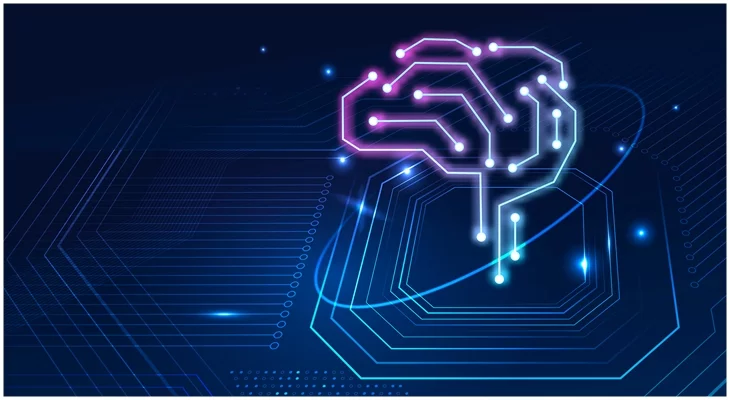This blog will look at mathematical concepts important for machine learning. Our lives have transformed with automation and machine learning. There are very few people who are not influenced by AI or ML. ML & AI are everywhere, including social media, smart finance, healthcare, and other means.
Machine learning is a broad field. It includes probability, statistics, computer science, and algorithms used to construct intelligent applications. These programs can extract meaningful information from data to arrive at business insights. Machine learning is all about the study and use of algorithms. So, you need a solid foundation in mathematics.
Machine Learning and Discrete Mathematics
Discrete mathematics deals with non-continuous numbers, most commonly integers. Discrete numbers are required in many applications. For example, you cannot send 0.34 taxis; only whole taxis can be sent. You can't have half a postman or make him go to one and a half locations to deliver letters.
Many artificial intelligence structures are discrete. For example, a neural network has an integer number of nodes and linkages. It cannot have 0.65 nodes or one-fifth of a link. As a result, the mathematics used to build a neural network must include a discrete element. It must be an integer that represents the number of nodes and interconnections.
To learn these topics, you must read texts on discrete mathematics. You may also need to put in more effort to comprehend this subject. As a result, discrete mathematics is a critical component of AI and ML.
Why is it Important to Understand Mathematical Concepts?
There are several reasons why mathematics is vital for Machine Learning. Here we will highlight a few of the most important ones below:
- Accuracy, training duration, model complexity, number of parameters, and number of features are important factors. They are essential while selecting the best algorithm.
- The selection of parameter values and validation procedures.
- Understanding the Bias-Variance tradeoff. It enables you to recognize underfitting and overfitting issues during program execution.
- Identifying the appropriate confidence interval and uncertainty.
Mathematical Concepts Important for Machine Learning
Our real-world business problems need these four pillars of Machine Learning. These pillars are also used to write many algorithms in Machine Learning. They're
- Statistics
- Probability
- Calculus
- Linear Algebra
Dealing with data is central to machine learning. One common basis allows us to achieve all this through computation for all the operations we conduct on data, and that is Math.
Statistics
It helps to derive conclusions from data. It also aims at statistical ways of gathering, presenting, analyzing, and interpreting numerical data. Statistics is also significant in the field of Machine Learning.
It works with vast volumes of data and is a key aspect of an organization's growth and development. Moreover, data is mainly gathered from censuses, samples, primary or secondary data sources, etc.
This stage assists us in identifying our objectives so that we may work on the next steps. The obtained data comprises noise, incorrect data, null values, outliers, and so forth. We must clean the data and turn it into a relevant observation.
The information should be appropriate and succinct manner. It is one of the most important processes since it aids in understanding the insights. It also serves as the foundation for further data analysis.
Data analysis includes condensing, summarizing, concluding, and so on. The interpretation process also includes deriving inferences from the data obtained.
Probability
The term probability refers to the occurrence of a certain event. Also, it is the possibility of that event occurring based on previous experiences. It helps in the field of Machine Learning to forecast the likelihood of future events.
The probability of an event is calculated as;
P(Event) = Favorable Outcomes / Total Number of Possible Outcomes
An event in the realm of probability is a collection of experiment results. The probability of an event occurring is P, and E is referred to as an Event. The probability of any event ranges from 0 to 1. A Trail is a condition in which the event E may or may not occur.
The following are some of the fundamental principles in probability.
Joint Probability
P(A ∩ B) = P(A). This sort of probability, P(B), is only possible when the events A and B are independent of one another.
Conditional Probability
It is the likelihood of event A occurring when another event B has already occurred and denotes by P (A|B, i.e., P(A|B) = P (A ∩ B)/ P(B)
Bayes theorem
It the applications of probability theory results. It includes estimating unknown probabilities and making judgments based on new sample information. In the existence of further information, it is useful in solving business difficulties. The popularity of this theorem stems from its utility in rewriting a collection of old probabilities with extra info & generating a set of new probabilities. We need to pay more attention to probability distributions. These distributions classify as Discrete and Continuous, Likelihood Estimation Functions, etc.
The Naive Bayes Algorithm in ML operates on a probabilistic basis. It is with the premise that input features are independent.
Probability is a key subject in most business applications. It also aids in forecasting future events from data and determining the next activities. This probability notion is frequently used by Data Scientists, Data Analysts, and Machine Learning Engineers. It also helps to take inputs and forecast alternative outcomes.
Calculus
A branch of mathematics that aids in the study of the rate of change of quantities. It concerns improving the performance of machine learning models or algorithms. It is difficult to compute probabilities on data without comprehending this calculus idea. Also, we cannot draw possible outcomes from the data we gather. Calculus focuses on integrals, limits, derivatives, and functions. Differential statistics and inferential statistics are the two types of statistics. It also helps in backpropagation techniques for the training of deep neural networks.
- Differential Calculus divides the given data into little pieces to determine how it changes.
- Inferential Calculus integrates (joins) the little bits to determine the whole amount.
Calculus is mostly employed in the optimization of ML and Deep Learning Algorithms. It also helps to provide quick and efficient solutions.
Calculus helps Data Scientists in the development of Deep Learning and ML Models. They aim to optimize data and produce superior data outputs. They do so by extracting intelligent insights concealed in it.
Linear Algebra
Linear Algebra is more concerned with computation. It helps understand the underlying idea of ML and also helps in Deep Learning. It provides us with insights into how the algorithms actually perform in real life. Thus allowing us to make better decisions. It works with vectors and matrices.
- A scalar is a single digit.
- A vector is a numerical array expressed in a row or column. It has a single index for accessing it.
- A matrix is a 2D array of numbers accessed by using both indices.
- A tensor is an array of integers arranged in a grid in a specific order and has a variable number of axes.
Without Linear Algebra, ML models cannot function. Complicated data structures cannot manage, and operations on matrices become impossible. Moreover, linear Algebra is a platform to display all the model outcomes.
Linear Algebra helps in the development of Machine Learning algorithms such as Linear, Logistic Regression, SVM, and Decision Trees. We can also create our own ML algorithms using Linear Algebra. Also, Data Scientists and Machine Learning Engineers use Linear Algebra to create algorithms.
Conclusion
We briefly understood the mathematical concepts important for machine learning in this blog. Mathematics also is a vital part for ML enthusiasts to focus on. It is also critical to have a good foundation in Math. Every notion you learn in ML, every small algorithm you develop or apply to solve a problem, has a direct or indirect relationship to Mathematics.
Understanding arithmetic is essential for developing machine learning solutions to real-world situations. Understanding arithmetic principles also aids in the development of problem-solving abilities.
With real-world challenges in machine learning, it is much easier to address them with mathematical ideas. It also improves essential problem-solving abilities.
You may also like to read:
Best Machine Learning Algorithms: A List Of 10 Best Algorithms
Machine Learning In Quantitative Finance: Trends And Applications





